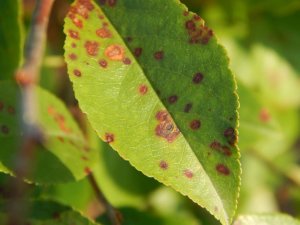Ornamental Tree and Shrub Problems You’ll See Most Often and Their Solutions
If shrubs and ornamental trees are important parts of your landscape, you already know how vulnerable they can be to a range of diseases and pests. Health problems can spread with surprising speed. Your best defense is learning about the most common threats so you can respond both quickly and appropriately. You can address some issues right away, while others demand professional attention like our Turf and Shrub programs.
Fertilization: The chemical balance of fertilizer can have major implications for plants. Underfertilizing may leave them pale and stunted, while overfertilizing can make them look burnt. A little research time will ensure that the combination of nutrients your plant assortment receives is just right.
Environmental Conditions: The location of your plants is also important for their development. Consider these factors when planting, and don’t hesitate to move them if necessary.
Sunlight: Too much exposure to the sun can cause a condition called sunscald. Leaves will dry out and curl up. Bleached spots may develop. On the other hand, too little sun will produce thin, underdeveloped plants.
Water: If you see leaves that are wilted or yellowing, and both young and old leaves are falling prematurely, the cause is probably excess water. This can be addressed by either transplanting or improving soil drainage. Underwatering obviously causes other issues, most visibly wilted plants. If the region doesn’t receive sufficient rainfall regularly, check for watering restrictions in the area to see if you can compensate with for any shortfall with a hose or a sprinkler system.
Temperature: As we all know, extreme fluctuations in temperature are never good for plants. In particular, intense cold can result in frost damage. Consider protecting your plants with old blankets or sheets, or other fabric barriers. Plastic is not recommended.
Pests: The list of multilegged critters eager to feast on your plants is a long one, encompassing whiteflies, scale insects, lace bugs, aphids, and Japanese beetles, among others in our region. Each brings its own brand of destruction, from holes to discoloration and beyond, many of which can prove fatal to plants if untreated. A large majority of these can only be controlled with insecticides.
Diseases: Many dangerous conditions, including root rot, leaf spot, and powdery mildew, can be discouraged by simply giving plants plenty of space to grow and, as we mentioned above, providing appropriate quantities of water.
We encourage all homeowners to add a weekly walk around your property to your lawn care routine. This will help you detect problems early in their development, so you can take action yourself or consider one of our Turf Care or Turf & Shrub programs.



